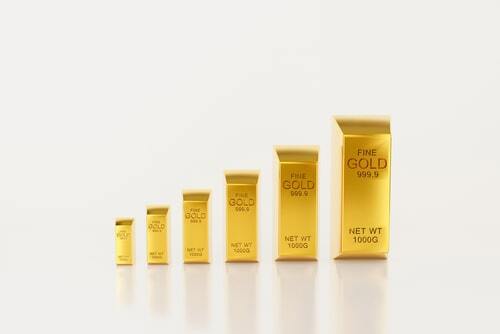
Volatile gold price action is here to stay as safe-haven interest 'reignited' – analysts
Gold could easily make another run at $2,000 an ounce next week as the geopolitical situation is not easing, but the volatile price action is here to stay, according to analysts.
After making a run for record highs last week, gold tumbled below $1,900 an ounce and managed to stabilize just below $1,930 an ounce on Friday. April Comex gold futures were last at $1,927.70, down 0.80% on the day.
Looking ahead, the market is still facing another uncertain weekend on the geopolitical front, with the war in Ukraine remaining the top driver for commodities. "We are watching what's going on in Ukraine. Frankly, nothing is more important to the market. It could shift the calculus on risk," said TD Securities head of global strategy Bart Melek.
Also, many in the gold space remain unconvinced that the Federal Reserve can raise rates six more times without significantly slowing down the economy.
"Gold prices continue to trade above $1,900/oz, despite the first Fed rate hike since 2018. The March meeting was hawkish but did not derail the positive sentiment towards gold," said Standard Chartered precious metals analyst Suki Cooper. "Current geopolitical risk has led to concerns that inflation could surge even higher for longer, reigniting longer-term interest in gold."
These past few weeks, investor interest in gold jumped – a big driver for prices, noted Cooper, warning of more volatility. "While the physical market has come under pressure, growth in investor interest has more than offset this weakness, suggesting that volatile price action is here to stay," she said.
Aside from the geopolitical uncertainty, investors are still digesting the Fed's new hawkish stance.
"Gold's reacted negatively to the Fed, but we saw the metal erase most of its losses after the central bank's announcement. As hawkish as the Fed was, the market is still skeptical that there will be six more rate hikes. That's a very aggressive forecast that didn't align with the Fed's inflation expectations of 4.3% this year," said Gainesville Coins precious metals expert Everett Millman.
Any pullback in those expectations would be positive for gold going forward, Millman added. "I am bullish right now. It is very healthy that gold pulled back this week. At the same time, we have to watch out for more volatility," he said.
Plus, inflation expectations are still bound to worsen after February's U.S. CPI data showed inflation at 7.9% — a fresh 40-year high.
"We still haven't seen the massive spike in food prices translate in. The problem is that 60% of CPI components are up 5% year-on-year," said Melek. "It is no longer transitory inflation. It is aggregate. Inflationary expectations could get de-anchored. As far as gold is concerned, Fed's promise doesn't become restrictive fast enough to fight inflation. This is a positive environment for gold."
IMF's warning: Russia's invasion of Ukraine 'may fundamentally alter' global economic and geopolitical order
A run to $2,000 an ounce level is not being ruled out, but the question is whether gold can stay there, added Melek. Analysts also stopped talking about gold dropping to $1,400. "And that's the trick," said Melek. "If the Fed becomes too restrictive, gold will sell-off. But it will be stronger than we thought a month ago on the downside."
Gold price levels to watch this week are $1,920 as support, followed by $1,875, noted Melek. The first major resistance comes in at around $1,980.
Millman is looking at $1,900 an ounce as support and $2,00 as resistance. "After $1,950, I wouldn't be surprised to see gold break $2,000," he said.
It will be a light data week, with markets watching Wednesday's new home sales and Thursday's durable goods orders, jobless claims, and manufacturing PMI.
"Data includes durable goods orders, which will be dragged lower by a drop in Boeing aircraft orders. Strip these out, and the report should be solid given evidence seen in business surveys, such as the ISM report. There are also plenty of housing data, which should be OK," said ING chief international economist James Knightley.
By Anna Golubova
For Kitco New
Time to buy Gold and Silver on the dips
David